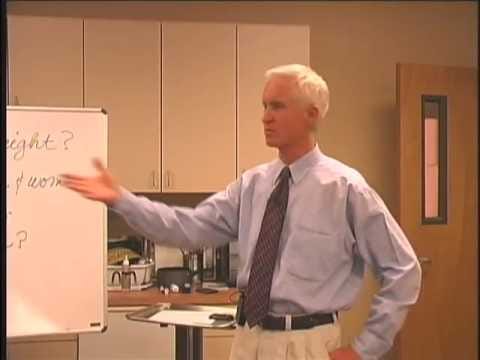Dr. Marik founded the FLCCC (Front Line COVID-19 Critical Care Alliance) that advises how to treat Covid and vax injuries. His hospital persecuted him after he saved an ICU patent at death's door using intravenous vitamins C, thiamine, and hydrocortisone. HERE is a news story about it. His protocol is the most successful one ever developed for hospitalized Covid patients.
Marik was guilty of spectacular clinical success using unprofitable vitamins. He was an innocent until he was attacked by his hospital, the journal where he published, and his internal medicine specialty board. This woke him to the medical industry's malpractice and the colluding journals' lies. As I listened to his story, I was once again reminded of the hospital corporations' grasping nature and indifference to life.
Because of Mercola's knowledge, his guests, and the rapport he builds, he is the best medical interviewer on the planet. Subscribe to his censored library HERE. I downloaded this audio at https://mercola.libsyn.com, where he makes his content available without copyright. His interviews are an introductory syllabus to holistic and functional medicine, and I’m working through them. Listen to this one at 1.5 speed or faster.
To support Dr. Mercola, buy your vitamins at mercola.com. I just bought liposomal vitamin C capsules from him HERE. They are well-absorbed, do not hurt your stomach, and one gram is equivalent to about three grams in other forms.
The following is from an excellent Substack:
Vitamin C for Disease Treatment: Forty-Five Years of Data and Propaganda and What it Means for 2022 and Beyond
MONICA HUGHES, PHD, MAR 4, 2022
Introduction
Nearly 80% of alternative clinics use large doses of intravenous vitamin C (ascorbate) for various health conditions, including cancer. (1) The practice dates back to the 1940s when Dr. Frederick Klenner used it to treat various infectious diseases.
High-dose intravenous ascorbate is now making inroads in relatively mainstream "integrative" oncology clinics after being neglected for nearly a half-century because cancer patients who are regularly treated with it experience fewer side effects such as fatigue, nausea, pain, vomiting, and appetite loss. They also have better performance status, better quality of life, and more prolonged survival. (2-4)
The mainstream oncology community is still relatively opposed to ascorbate, however. There are a variety of reasons, but chief among them are:
The belief that alternative therapies will steer people away from conventional treatment.
The belief that alternative therapies will interfere with chemotherapy because ascorbate is an antioxidant.
The problem with the second line of reasoning is that pharmacological doses of this vitamin are not antioxidant: they are pro-oxidant, and Vitamin C may offer lengthened survival to terminal cancer patients that have exhausted their conventional options.
Let's look at all of this in more detail.
Evidence for the Use of High-Dose IV Vitamin C
A landmark study was published in 1976 by Linus Pauling (Nobel Prize winner in chemistry, 1959) and his colleague Ewan Cameron. This study demonstrated that 10 g. intravenous ascorbate per day for ten days, followed by 10 g. oral vitamin C per day thereafter resulted in a two- to seven-fold increase in survival in 100 terminal cancer patients, depending on the type of cancer. (5)
Each of these 100 patients was considered untreatable and "totally hopeless" by at least two physicians. In the modern day, this is what we call terminal cancer. In this 1976 study, survival time across all cancers was more than 210 days for those treated with vitamin C, compared to only 50 days for the untreated matched controls. Because the study wasn't blinded, and to ensure these results were accurate, Pauling and Cameron retrospectively had a colleague select ten matched controls for each treated patient.
Because the result was received skeptically, they published a new study in 1978. They discarded the original 1000 control patients from the study and re-analyzed the initial treatment group of 100 patients with newly selected controls. The mean survival time in the treated group was found to be 300 days more than the matched controls this time, an increase of 90 days on average. (6)
Vitamin C was shown to perform even better than in the first study. (!)
This seems like robust evidence in favor of high-dose intravenous ascorbate, and the doses administered are more than 100 times the FDA's Recommended Daily Allowance.
What happened?
These two studies created a storm of controversy in the scientific community. Shortly after, two more studies were conducted at the Mayo Clinic, attempting to replicate these results. (7, 8) Those studies resulted in Vitamin C being dismissed as a cancer treatment. Why?
The authors found no difference in symptoms or survival between treatment and control groups using 10 grams of vitamin C for treatment. However, there is one crucial difference between these two sets of studies. The cancer patients in the Mayo Clinic study did not get the preliminary ten days of intravenous treatments: they received only oral vitamin C.
Many researchers now believe this is a critical distinction. (9, 10) Studies performed by Mark Levine and colleagues at the National Institutes of Health have shown that intravenously administered ascorbate can cause plasma levels 100 times higher than that achievable by the same dose administered by mouth. (11-15)
Second, new studies demonstrate that ascorbate does not act as an antioxidant at such high doses. It acts as a pro-drug to deliver hydrogen peroxide to cancer cells. First, let's look at more evidence that ascorbate is an effective cancer treatment.
Finish reading this short, highly recommended essay HERE.
Primal Panacea (2011) by Thomas Levy is the ultimate vitamin C textbook with over 1000 citations.
From the cover: "Overwhelming documentation proves that in high enough doses, this substance prevents and cures cancer, heart disease, infections, and degenerative diseases." The stories about its successes treating cancer, heart disease, infections, and other inflammatory illnesses are incredible.
As I read, I was stunned by the longstanding knowledge about C and profoundly disillusioned that the vitamin is not used as a routine supplement in nearly every acute hospital situation. Like Dr. Marik, I remain innocent in some ways.
Whether you are a physician or patient, if you have plans to take vitamin C, study these books. Neither is hard to understand, although Levy's prose is doctor-ish (please call me out if you find that in my writing). As an introduction, below are edited excerpts from the vitamin C chapter in Levy's 2019 magnesium book below. He writes, "Vitamin C works better as a monotherapy than any other single agent…"
Many conditions, especially acute infections, and acute toxin exposures, can readily be addressed and wholly resolved with an aggressive administration of intravenous and/or oral multigram doses of vitamin C for several days.
Inadequate dosing remains the most critical factor in preventing complete clinical success with the vitamin C treatment. This is especially for acute viral and bacterial infections.
Some success short of an optimal response can just about always be seen, no matter how little vitamin C is given. In sick individuals, [almost] any amount will be of benefit.
Unlike many other clinical scenarios where more than the recommended dose of a clinically-indicated agent can cause toxicity or other clinical problems, more vitamin C can be expected to help even more. Even with the ultra-high doses of vitamin C that have been administered over the previous decades, a toxic level has never been defined (my emphasis).
ALWAYS, when the patient is critically ill and in danger of imminent hemodynamic (blood pressure) collapse and death, be prepared to give additional dosing. Stabilizing the patient may require direct injection over seconds to minutes by syringe. In an acutely poisoned or infected patient, prompt administration of more vitamin C should always be given before any clinical evidence of deterioration develops.
The lack of vitamin C toxicity always warrants an aggressive dosing approach in critically ill, clinically unstable patients. While not an absolute rule, a reasonable guide for selecting the initial intravenous dose of vitamin C suggests between 1 to 1.5 grams per kilogram of body weight (50 to 100 grams or more).
While there is no absolute maximum dosage, most individuals will do very well on one to five grams of oral liposome-encapsulated vitamin C if financially feasible (a recently invented and superior preparation).
Oral vitamin C is best given several times a day due to its rapid clearance through the kidneys. This is less of a concern with the liposome-encapsulated form of vitamin C.
The best way to determine the appropriate daily dose of vitamin C the body needs is to administer a powdered form of sodium ascorbate or ascorbic acid regularly and increase dosages to the point of diarrhea (bowel tolerance). Most reasonably healthy individuals will reach a daily bowel tolerance dose at somewhere between 5 and 15 grams.
People who begin supplementing vitamin C soon develop a sense of what amount of vitamin C makes them feel the best, and this is an excellent way to help determine long-term dosing.
Vitamin C can be given in seconds from a syringe as an IV push or infused rapidly, slowly, or even as a continuous infusion over 24 or more hours. IV Push: When a patient is in shock or imminent danger of death (such as might be seen after acute exposure to life-threatening amounts of venom or toxin that are still circulating in the bloodstream), multigram doses of vitamin C can be given IV push with sodium ascorbate or well-buffered ascorbic acid.
Rapid infusion generally means an infusion rate as rapid as a wide-open IV line will permit. Practically speaking, this translates to 500 to 700 cc of vitamin C solution being administered between 40 and 60 minutes, typically containing between 50 and 100 grams of vitamin C.
Even when clinical normalcy appears to have been restored, giving sizeable doses of vitamin C for at least 48 hours after the patient "appears" completely cured is very important. Acute infections, especially viral ones, can often rebound when vitamin C therapy is not extended for this length of time.
The amount of sodium ascorbate needed to exceed the bowel tolerance point can also be helpful as a rough guide as to the degree of infection or toxicity in the patient. Generally, the greater the infectious and/or toxic challenge, the more vitamin C gets absorbed earlier in the gut, and the less it reaches the colon to reach and exceed the bowel tolerance point.
if an individual is receiving chemotherapy for cancer, the vitamin C might neutralize the chemotherapy drug itself if it is circulating in the blood at the same time and enough vitamin C is circulating in the blood. Chemotherapy is a toxic, electron-seeking agent, and vitamin C is an antioxidant, electron-donating agent. (The solution is to give the C and the chemo at different times of the day.)
The literature is now clear that vitamin C substantially improves the anti-cancer effects of chemotherapy while dramatically lessening the side effects associated with chemotherapy.
Except in patients with significant chronic renal insufficiency or renal failure, vitamin C has never exhibited toxicity at any administration level.
In addition to their energy-sparing delivery system, liposomes have an exceptionally rapid and enhanced form of absorption in the gastrointestinal tract, with very little remaining unabsorbed, unlike traditional forms of vitamin C. The payload encapsulation by lipids also prevents potential stomach upset.
Experienced physicians do not use the word panacea lightly, but in this case, I agree it is deserved.
Other Sources:
From 2011: Action Alert—Now the FDA Is Going After Vitamin C!
From 1949: Successful treatment of polio with vitamin C.
Arnie at Liars World Substack found the references above in his 200,000-page personal library.
The Cassandra's Memo ebook is free HERE if you promise to send this download link to five or more others. The paperback is available at Barnes and Noble. With your help, we will educate some people sitting on the fence. If you have time to write a review at Barnes and Noble, click HERE and scroll down the page until you see the blue "review" button on the right.
BONUS: I am also giving away the Hormone Secrets and Butchered by "Healthcare" ebooks using the same arrangement; you can download them free HERE and HERE if you promise to send the links to your friends. The paperbacks are available at Amazon.
Parting shot: HERE is “Hospitals and care facilities are federally mandated killing fields” by my friend Scott Schera.












